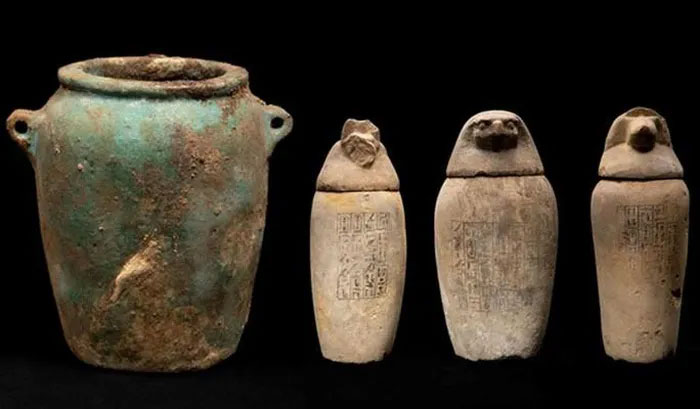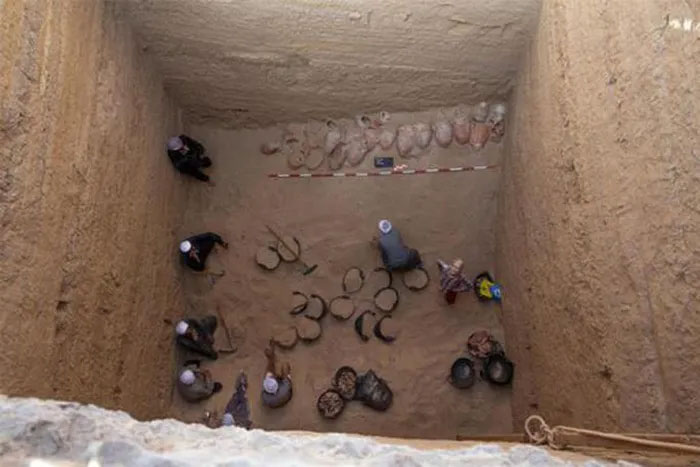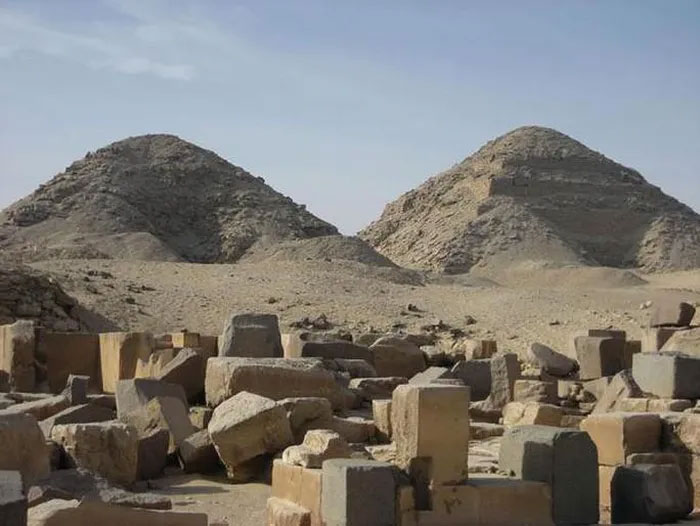In a large burial shaft within the ancient Abusir cemetery north of Saqqara (Cairo, Egypt), scientists have discovered a special ancient well containing artifacts that perfectly recreate the famous mummification process of ancient Egyptians.
This massive well measures 5.3×5.3 meters and is approximately 14 meters deep. Inside, archaeologists found 370 large pottery jars, many of which contained remnants of materials used in the mummification process, according to a statement from the Egyptian Ministry of Antiquities.

Containers for mummification materials and limestone jars prepared for holding organs, but never used – (Photo: Egyptian Ministry of Antiquities).
The archaeological team from the Czech Institute of Egyptology has been working in this area for 60 years, making many invaluable discoveries. However, this new find is particularly significant because the contents of this ancient well will help unveil many mysteries surrounding the legendary mummification techniques of the Egyptians.
Ancient Egyptians believed that the soul temporarily leaves the body and re-enters in the paradise of Osiris, the god of the afterlife. If the body is not preserved, it cannot reunite with the soul, and thus the deceased cannot enter paradise.

The mysterious ancient well, not used for burying the dead but as a storage for mummification tools – (Photo: Egyptian Ministry of Antiquities)
According to Ancient Origins, the jars containing mummification materials are known to include salts and natron, as well as various unidentified herbs and dried flowers.
Therefore, scientists are planning to analyze these mysterious materials accurately, hoping to perfectly recreate the ancient mummification techniques. Researchers also note that Egyptian mummification techniques were not a fixed process but evolved over time, resulting in mummies with increasing durability and integrity.

A section of the ancient Abusir cemetery, overlooking the two pyramids of Nyuserre and Neferirkare – (Photo: Egyptian Ministry of Antiquities).
Among these jars, there are four specifically used for holding organs, inscribed with the name of their owner – Wahe Ip Ra – in hieroglyphs, yet they were found empty for reasons unknown.


















































